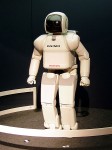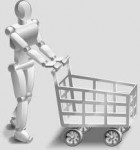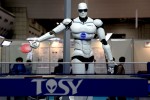
Featured Image: ASIMO (2000) at the Expo 2005, a bipedal humanoid robot. CREDIT: Taken by Gnsin at Expo 2005, in Japan. SOURCE: Wikipedia Commons. (This file is licensed under the Creative Commons Attribution-Share Alike 3.0 Unported license).
Damn! There go the jobs many people thing will still be left for humans when they are replaced by robots in the not-to-distant workforce. . . EDITOR
From Space Daily by Larry Hardesty for MIT News
Boston MA (SPX) Oct 08, 2013
In 2011, when an MIT senior named John Romanishin proposed a new design for modular robots to his robotics professor, Daniela Rus, she said, “That can’t be done.”
Two years later, Rus showed her colleague Hod Lipson, a robotics researcher at Cornell University, a video of prototype robots, based on Romanishin’s design, in action. “That can’t be done,” Lipson said. . . . Read Complete Report
From youtube uploaded by MITNewsOffice
Published on Oct 3, 2013
Known as M-Blocks, the robots are cubes with no external moving parts. Nonetheless, they’re able to climb over and around one another, leap through the air, roll across the ground, and even move while suspended upside down from metallic surfaces. . . . From the Description published with video.















